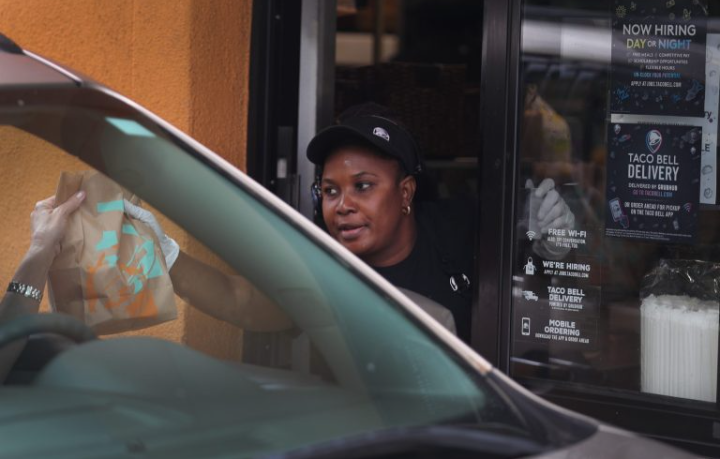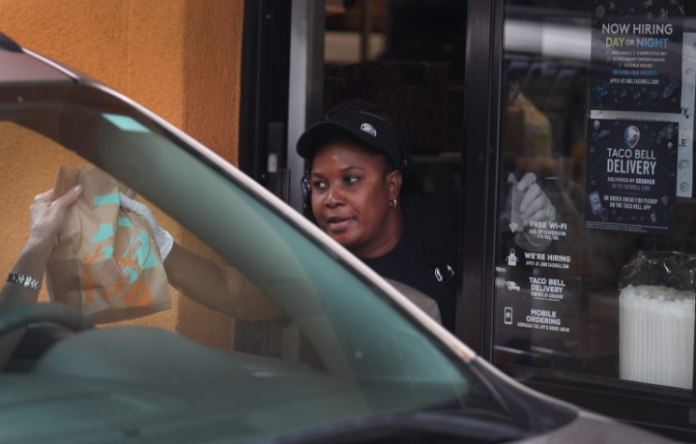Nvidia, a leader in AI and semiconductor technology, is teaming up with Yum! Brands—the parent company of Taco Bell, KFC, and Pizza Hut—to integrate artificial intelligence into fast-food ordering. The partnership aims to improve drive-thru efficiency, enhance customer experience, and streamline restaurant operations.
This collaboration marks Nvidia’s first major step into the restaurant industry, with plans to implement AI-powered solutions across 500 locations by the end of the year. But will AI finally solve fast-food’s biggest bottlenecks, or will it repeat the failures of past attempts? Let’s dive in.
How AI Will Transform Taco Bell’s Drive-Thru Experience
With Nvidia’s AI technology, Yum! Brands restaurants will automate several key processes:
Faster Order Processing: AI-powered systems will take drive-thru and call-in orders, aiming to reduce miscommunication and long wait times.
Smarter Menu Suggestions: Customers will receive personalized recommendations based on real-time factors like prep time, reducing bottlenecks.
Operational Insights: AI will track drive-thru queues, analyze store performance, and suggest efficiency improvements for restaurant managers.
This partnership builds on Yum! Brands’ Byte by Yum! AI software, which was introduced last month to streamline the company’s 300 million+ annual digital transactions. Currently, about 25,000 of its 61,000 global locations use some form of Byte by Yum! technology.
Can Nvidia Succeed Where McDonald’s and Wendy’s Struggled?
Fast-food chains have been experimenting with AI for years, but the results have been mixed.
McDonald’s partnered with IBM to automate drive-thru ordering but ended the project in 2024 after customers reported bizarre mistakes—like getting nine sweet teas when they only ordered one.
Wendy’s introduced AI-powered digital menus, which sparked backlash over fears of surge pricing, even though the company denied it.
The key question is: Has AI advanced enough to avoid these pitfalls?
Marketing expert Raghuram Iyengar from the Wharton School believes the timing might be right. In just the past six months, AI has become more sophisticated, and consumers have grown more comfortable interacting with it. But he also notes that customer acceptance will be crucial—will diners embrace AI ordering, or will they still prefer a human touch?
Why This Move Is a Big Deal for Nvidia and Yum! Brands

Both Nvidia and Yum! Brands have had strong financial years, making this partnership a strategic move for both companies:
Nvidia’s revenue surged 126% to $60.9 billion in 2024, though competition and economic concerns have raised questions about its long-term dominance.
Yum! Brands grew 7% year-over-year, largely driven by Taco Bell’s success.
For Yum! Brands, integrating Nvidia’s AI could significantly enhance operations without heavy in-house development. Meanwhile, Nvidia has the opportunity to expand beyond its traditional semiconductor business and prove it can successfully integrate AI into new industries.
This partnership could be a game-changer—if Nvidia gets it right.
Final Thoughts: Is This the Future of Fast-Food AI?
The fast-food industry is moving toward automation, but past failures show that AI must be both accurate and customer-friendly. Nvidia and Yum! Brands’ partnership is promising, but the real test will be in how well it can avoid the missteps of McDonald’s and Wendy’s.
If successful, we could see AI-driven fast-food experiences becoming the norm across the industry. But if it flops, it’ll be just another failed experiment in the quest for faster fries.



